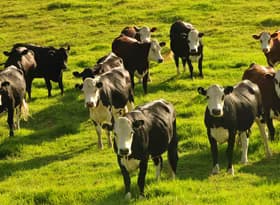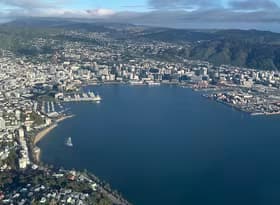Swimming at our picturesque beaches, rivers and lakes is a Kiwi summer staple as many of us have time off in the summer months. Sometimes our favourite swimming spots can become contaminated with unsafe levels of organisms such as E. coli, enterococci and toxic algae which pose a health risks such as gastroenteritis, ear and skin infections. Over the Christmas break there were many areas of the country which were unsuitable for swimming such as about 20 swimming spots around Auckland, along with some Canterbury swimming spots.
We recently added swimmability to the Regional Economic Profile, enabling you to compare swimmability trends over time across territorial authorities. In this article, we dive into swimmability trends from 2023/24.
How we measure swimmability
We introduced a series of environmental and health indicators to the Regional Economic Profile in late 2024, including a swimmability measure.
The safe swimming measure is created by taking the level of faecal indicator bacterial (FIB) and/or potentially toxic algae monitoring results from popular recreational water swimming spots meet water quality guidelines. We have calculated the percentage of the summer period (December to February), that an individual swimming spot is suitable for swimming and calculated the average percentage of the time swimming spots in an area (territorial authority or region) were deemed safe to swim.
The timeseries available for this measure begins in the 2017-18 summer, with many monitoring authorities increasing the number of monitoring sites, and in the 2023-24 summer there were 11% more testing sites used.
Improved swimmability in 2023-24
Swimmability improved at the national level in the 2023-24 summer, with popular swimming sites safe for swimming 80% of the time in the 3-months to February 2024 up from 76% in the previous summer. Although this is below the 2021 peak of 84%, there was a slight uptick in the number of testing sites of 5.2%.
During the 2023-24 summer, four TAs showed safe swimming measures at all testing sites on all days that were tested - Kawerau, South Wairarapa, Westland and Queenstown-Lakes. An impressive two-thirds of all territorial authorities posted swimmability of 70% or above over the 2023-24 summer, although this is lower than the all-time high of 82% in 2020 (based on data from 2017 to 2024).
The South Island tended to have better swimmability in the 2023-24 summer, with average swimmability of 85% across South Island territorial authorities, ahead of 70% for North Island territorial authorities.
Still time to dip your toes
Despite the underwhelming weather in many of the main centres including Christchurch and Wellington, there’s still plenty of time for some warm weather to come through for an afterwork or weekend swim to be on the cards. Before you head to your usual swimming spot this summer make sure to head to LAWA to see whether it is safe to swim. To look at trends around swimmability in your area, head to the Regional Economic Profile.











